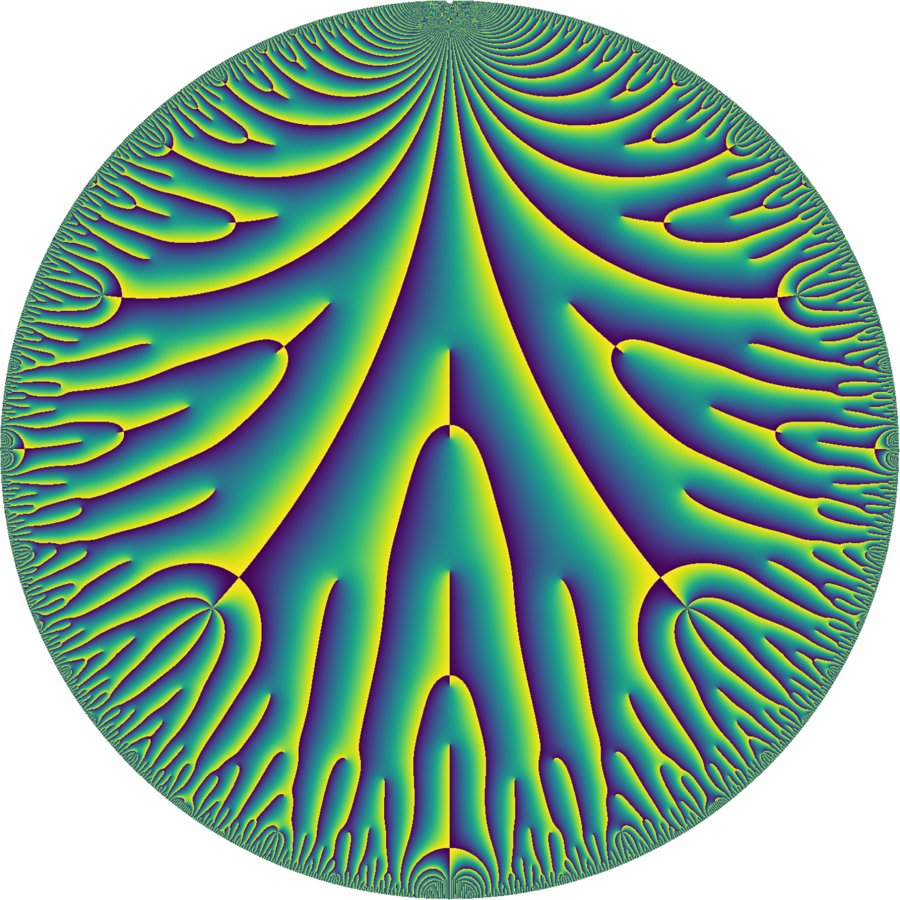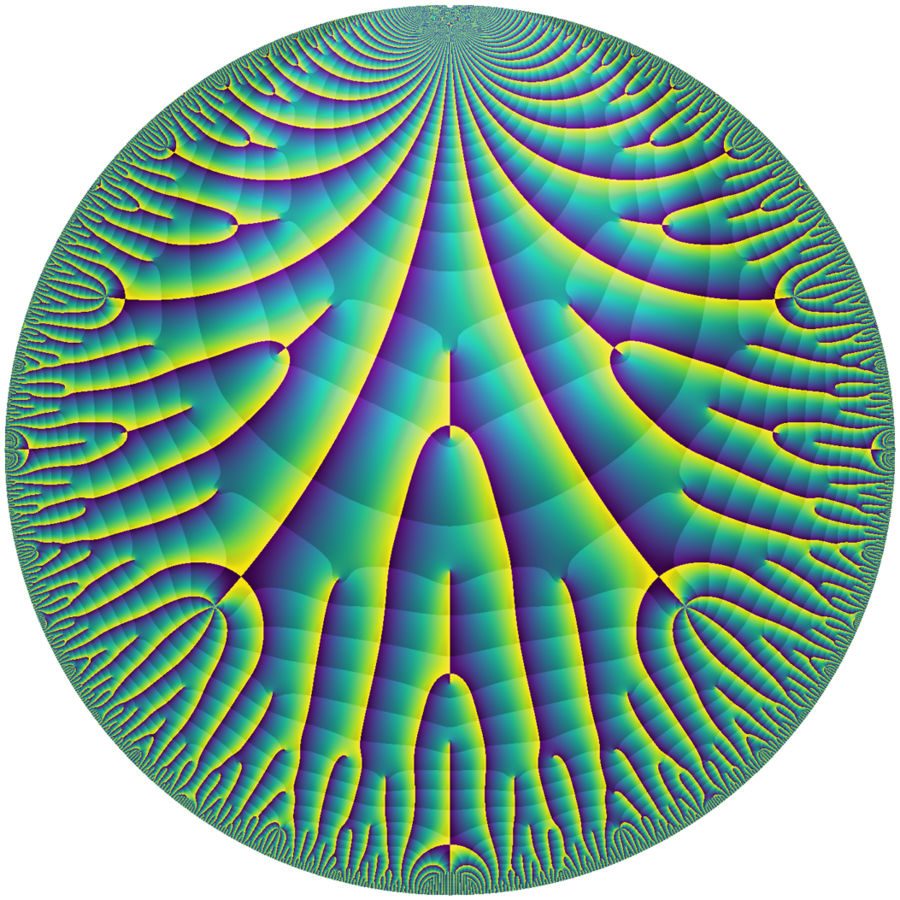When asked if I might contribute an image for MSRI program 332, I thought it would be fun to investigate a modular form with a label roughly formed from the program number, 332. We investigate the trace form 3.32.a.a.

The space of weight $32$ modular forms on $\Gamma_0(3)$ with trivial central character is an $11$-dimensional vector space. The subspace of newforms is a $5$-dimensional vector space.
These newforms break down into two groups: the two embeddings of an abstract newform whose coefficients lie in a quadratic field, and the three embeddings of an abstract newform whose coefficients lie in a cubic field. The label 3.32.a.a is a label for the two newforms with coefficients in a quadratic field.
These images are for the trace form, made by summing the two conjugate newforms in 3.32.a.a. This trace form is a newform of weight $32$ on $\Gamma_1(3)$.
Each modular form is naturally defined on the upper half-plane. In these images, the upper half-plane has been mapped to the unit disk. This mapping is uniquely specified by the following pieces of information: the real line $y = 0$ in the plane is mapped to the boundary of the disk, and the three points $(0, i, \infty)$ map to the (bottom, center, top) of the disk.

This is a relatively high weight modular form, meaning that magnitudes can change very quickly. In the contoured image, each contour indicates a multiplicative change in elevation: points on one contour are $32$ times larger or smaller than points on adjacent contours.
I have a bit more about this and related visualizations on my visualization site.
Info on how to comment
To make a comment, please send an email using the button below. Your email address won't be shared (unless you include it in the body of your comment). If you don't want your real name to be used next to your comment, please specify the name you would like to use. If you want your name to link to a particular url, include that as well.
bold, italics, and plain text are allowed in comments. A reasonable subset of markdown is supported, including lists, links, and fenced code blocks. In addition, math can be formatted using
$(inline math)$or$$(your display equation)$$.Please use plaintext email when commenting. See Plaintext Email and Comments on this site for more. Note also that comments are expected to be open, considerate, and respectful.